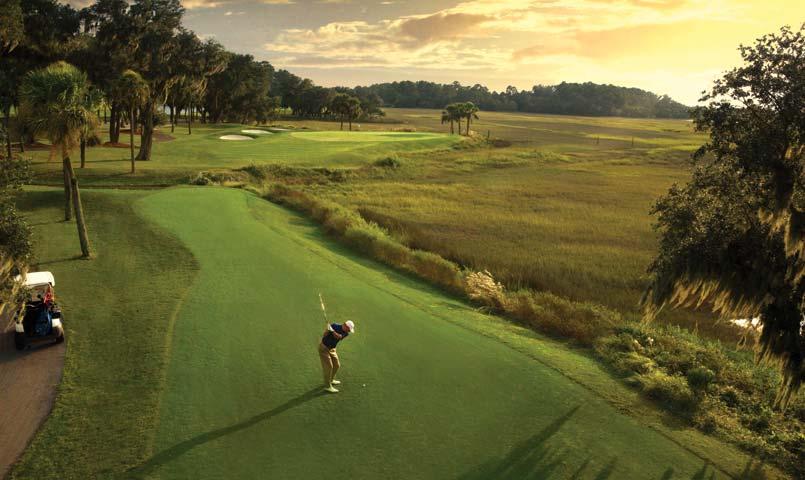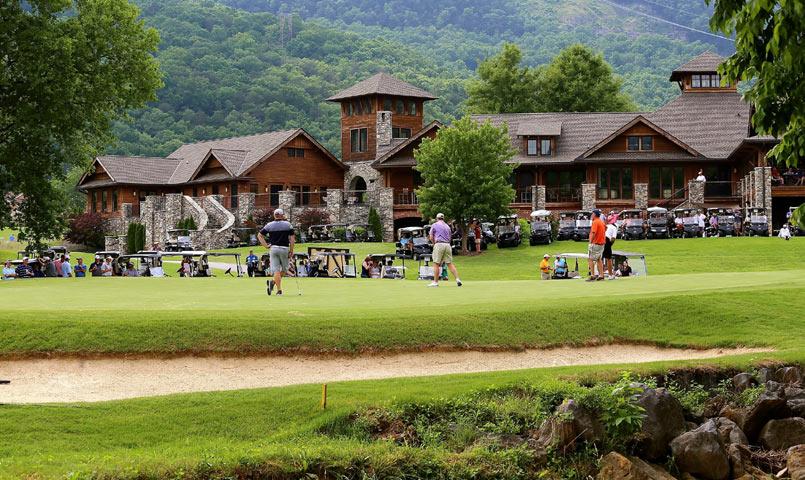by Robert Borges on July 15, 2025
No. Yes. Sometimes. It depends.
When it comes to the question “Are golf courses bad for the environment?” the answer isn’t black and white. Like many land-use topics, the environmental impact of golf courses can vary widely based on how they are designed, constructed, and maintained. While golf and the environment have historically had a rocky relationship, modern practices have opened the door to more sustainable, eco-friendly golf course management.
In this article, we’ll explore the most common concerns about golf courses and the environment, the surprising benefits they can offer, and what to look for in a golf community that values sustainability.
What Are the Negative Environmental Impacts of Golf Courses?
1. Pesticides and Fertilizers Can Pollute Groundwater
A common criticism of golf courses is their use of chemical pesticides, herbicides, and fertilizers. These substances can seep into the soil and contaminate groundwater, posing a risk to nearby ecosystems and drinking water sources. When not carefully managed, runoff can introduce nitrogen and phosphorous into local waterways, leading to harmful algal blooms.
2. Habitat Loss and Landscape Disruption
Golf courses often require large plots of land. When natural habitats, wetlands, and forests are cleared for development, biodiversity can suffer. This is especially true for courses built in ecologically sensitive areas without proper planning or restoration efforts.
3. Water Consumption
Maintaining lush, green fairways and greens typically requires a substantial amount of water, particularly in arid climates like Arizona or Southern California. This has led many to question whether golf courses are a responsible use of water resources—especially during periods of drought or water scarcity.
Can Golf Courses Be Good for the Environment?

Despite the drawbacks, golf courses can also serve as powerful tools for environmental conservation—when properly managed. Many modern golf communities have embraced sustainable practices that enhance, rather than degrade, the natural landscape.
1. Wildlife Habitat Preservation
Eco-conscious golf communities often work with environmental organizations such as Audubon International to create certified wildlife sanctuaries. These courses incorporate native plants, wetland buffers, and green corridors that support birds, pollinators, and other wildlife. Some even install bat boxes, birdhouses, and fish habitats to encourage biodiversity and reduce reliance on chemicals.
2. Water Conservation Through Smart Irrigation
According to the USGA’s Water Conservation Playbook, golf courses account for about 1.3% of irrigation water use in the U.S. annually, and total golf course water use has declined by almost 30% since 2005. This is thanks in part to precision irrigation systems, drought-resistant turfgrass, and watering during cooler parts of the day to reduce evaporation. Some golf communities even recycle and reuse stormwater or treated wastewater for irrigation.
3. Water Quality Improvement
Courses that use reclaimed water help clean and filter it before it returns to natural waterways. Turfgrass has natural filtration properties that remove pollutants from water, reducing contaminants and helping to restore degraded land. This process can improve water quality while providing aesthetic and recreational value.
What Are Golf Communities Doing to Become More Eco-Friendly?
The best golf communities are investing in environmental stewardship. From landscape architecture to green building practices, today’s course designers and community developers are prioritizing sustainability.
Many environmentally-conscious golf communities:
- Participate in wildlife conservation programs
- Use native vegetation to reduce irrigation needs
- Install solar-powered golf carts and clubhouse systems
- Create natural buffers around water features to prevent runoff
- Maintain walking and biking trails to promote low-impact recreation
This movement toward sustainable development is not only good for the planet—it’s also becoming a major selling point for homebuyers who value green living.
How to Find an Environmentally Responsible Golf Community

If you’re passionate about golf and the environment, living in a golf course community that prioritizes sustainability might be the perfect fit. For the past 30 years, PCR (Private Communities Registry) has helped thousands of homebuyers find the ideal golf lifestyle. With hundreds of golf communities featuring world-class courses and amenities, you can search by region, price range, and environmental focus.
Whether you’re seeking eco-conscious design, waterfront living retirement homes, or a golf lifestyle that gives back to nature, you’ll find plenty of options that blend luxury and sustainability.
Final Thoughts: Golf Courses and the Environment
So, are golf courses bad for the environment? They can be—but they don’t have to be. With careful planning and responsible management, golf courses have the potential to support ecosystems, improve water quality, and provide valuable green space.
As interest in sustainable living continues to grow, more communities are turning golf into an opportunity—not an obstacle—for environmental stewardship.
At PCR, we spotlight many golf communities that are embracing this shift. Browse our collection of premier golf communities and explore eco-conscious options where the love of the game meets the love of the land.
Frequently Asked Questions About Golf and the Environment
Are all golf courses bad for the environment?
No. While some poorly managed courses can harm the environment, many modern golf courses are designed with sustainability in mind. Proper maintenance, native landscaping, and eco-friendly water practices can minimize or even reverse environmental damage.
Do golf courses waste water?
Not necessarily. With today’s smart irrigation systems and water reuse strategies, many courses use far less water than people assume. Some even improve local water quality through natural filtration.
Can golf courses support wildlife?
Yes. Many golf courses provide green space and habitat for birds, pollinators, amphibians, and other species—especially when designed with conservation in mind.
How can I tell if a golf course is environmentally friendly?
Look for certifications from programs like Audubon International or signs that the course uses native plants, reclaimed water, and low-impact landscaping.
Final Thoughts: Golf Courses and the Environment
So, are golf courses bad for the environment? They can be—but they don’t have to be. With careful planning and responsible management, golf courses have the potential to support ecosystems, improve water quality, and provide valuable green space.
As interest in sustainable living continues to grow, more communities are turning golf into an opportunity—not an obstacle—for environmental stewardship.
At PCR, we spotlight many golf communities that are embracing this shift. Browse our collection of premier golf communities and explore eco-conscious options where the love of the game meets the love of the land.
About the Author
With over 20 years of experience as a seasoned content creator, Robert Borges is the senior writer for Private Communities Registry (PCR), specializing in real estate trends and master-planned communities. He works closely with builders, developers, and real estate pros to create helpful content that guides homebuyers in finding the perfect community, ensuring they have the information needed to make confident, informed decisions.
